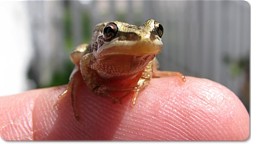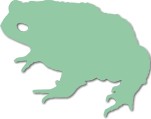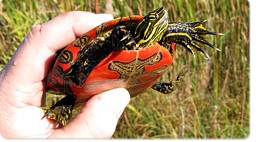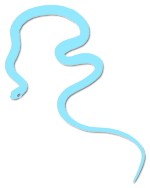Herp Bits:
There are 24 species of reptiles and amphibians in Manitoba!
Reptiles and amphibians are collectively known as herpetofauna or just "herps".
You can help make sure they're all still here for your grandchildren to enjoy.
Welcome to the Manitoba Herps Atlas on NatureNorth.com!
2021 Update: After 10 years of operation the MHA website will no longer be collecting new records. The site will remain intact as an archive of the information gathered. A final presentation of the MHA data and final maps of the MHA records can be viewed at these links: Final MHA Data | Final Maps of MHA data We encourage folks to make use of the Go Wild project run by Manitoba Sustainable Development. Visit these links: Go Wild Manitoba | iNaturalist | iNat Manitoba Herps Atlas Thank-you to all those that participated in the MHA! |
This is our new project  aimed at finding out where all Manitoba's reptiles
and amphibians live in our
province. What? You thought the government, museums and universities
already knew that? Wrong-oh!
aimed at finding out where all Manitoba's reptiles
and amphibians live in our
province. What? You thought the government, museums and universities
already knew that? Wrong-oh!
Manitoba hasn't done a great job of keeping track of its herps, so now its up to you and me to help out. The MHA will give all Manitobans a chance to help build a knowledge base of our province's reptiles and amphibians. What good will that do? Well, hopefully, it will help us all to make the right decisions about how to preserve our natural heritage, at least the herps component of it. Humans have to live and make a living on this planet, but it's time we started doing that with more consideration for all the other living things out there.
 What is a Herps Atlas?
What is a Herps Atlas?
Everybody's seen an "atlas", a large book of maps and pictures that show where things are in given geographical areas. That's what this will be, except it won't ever be on paper (waste of trees) and we don't yet have all the information to fill in a map of Manitoba with what herp species lives where. The MHA is about gathering and collating that information, and making it available to all Manitobans.
As a starting point we do have "The Amphibians and Reptiles of Manitoba" by William Preston published in 1982, and some records from Manitoba Conservation to build estimated ranges of Manitoba's herps, but we need more current information if we are to protect our herps.
The MHA won't be a static product either. You can't manage our natural heritage by taking one snapshot view of things and deciding what to do for the next 20 years. Things change over time, wildlife populations rise and fall, species move from one part of the province to another, new species may enter Manitoba. The MHA will, we hope, be running forever, acting as an ongoing and ever-updating source of information on Manitoba's herps.
How can I get involved and help herps?
 Well, first you have to learn a little about Manitoba's reptiles and amphibians. You need to be able to identify the critters out there on the land. We have a great identification guide here with tips on how and when to find these guys. (Click on the Species Info links in the top menu bar.) With a little preparation you can become a herp scientist and help build the body of knowledge about these critters in our province.
Well, first you have to learn a little about Manitoba's reptiles and amphibians. You need to be able to identify the critters out there on the land. We have a great identification guide here with tips on how and when to find these guys. (Click on the Species Info links in the top menu bar.) With a little preparation you can become a herp scientist and help build the body of knowledge about these critters in our province.
Once you have a handle on our herps start taking note of what you find in your yard or neighbourhood. Keep your eyes peeled when you're out for a walk, on a camping or fishing trip, or on a real herp safari! And when you find something, tell us! Send in a report of what you found.
So, c'mon Manitoba, let's get herping! Get involved with the MHA and help herps, they're ours to protect.
 Viewing the Data or Submitting a Record
Viewing the Data or Submitting a Record
The MHA Online Database is no longer collecting records. Please see the Data Page for a final summary.
Project Support
This project was made possible by support from Manitoba's Sustainable Development Innovations Fund and the Endangered Species and Biodiversity Fund. See the Credits Page.
![]()
You can help support the continuing operations of this citizen-science project. Every contribution makes a difference! |
Just want more information? Contact us at: Email the Manitoba Herps Atlas.